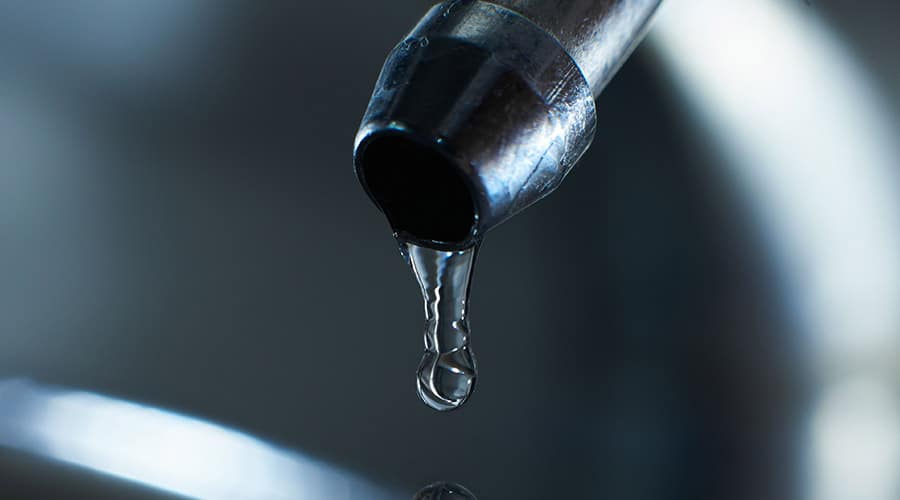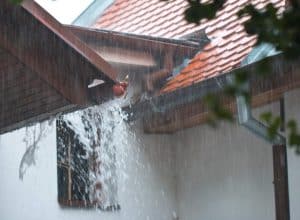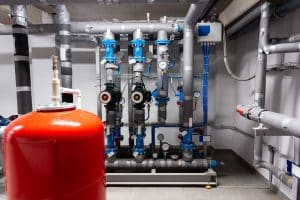Leaks can be sneaky and often go unnoticed until you’re faced with water damage or a spiking water bill.
Fortunately, there are some simple ways to detect leaks early before they lead to more serious issues.
In this guide, we’ll walk you through easy leak detection techniques and explain when it’s time to call a professional.
Understanding Common Sources of Leaks
Leaks can happen in different areas of your home, and knowing the usual suspects can help you figure out where to look first. The most frequent causes of leaks include pipes, roofing, fixtures, and foundations. Over time, pipes can corrode, crack, or burst, especially in older homes. Damaged or rusty pipes are one of the main culprits of leaks, often leading to bigger plumbing problems if not addressed quickly.
Roofing problems, such as missing or damaged shingles, allow water to seep into your attic or ceilings, causing unsightly stains or, worse, structural damage. Inside the home, faucets and toilets are notorious for small leaks that often go unnoticed. Even a slow drip can add up over time, wasting water and raising your bill. Lastly, water can find its way through cracks in your home’s foundation, leading to basement flooding or long-term structural damage. Addressing these issues quickly is crucial to protecting your home’s integrity.
Simple Leak Detection Techniques
There are a few easy methods you can use to check for leaks around your home. These techniques don’t require special equipment and can save you a lot of trouble if you catch a leak early.
1. Carry Out a Visual Inspection
The first step in leak detection is a thorough visual inspection. Examine pipes, joints, and connections for any signs of leakage or damage, such as dampness, discoloration, or musty odors. Monitoring water or gas meters can also help identify leaks.
Water stains on ceilings, walls, or floors are telltale signs of a leak. Discolored patches, especially in areas near plumbing, are often indicators of a problem. If you notice mold in places where it shouldn’t be, it could also be a sign that water is leaking nearby. Damp areas on floors, carpets, or walls might signal a hidden leak as well. Pay close attention to spots around appliances like dishwashers, washing machines, and fridges, as well as areas near plumbing fixtures.
2. Listen for Drips
Sometimes, you’ll hear a leak before you see it. In a quiet house, the sound of dripping water can alert you to trouble, even if the leak is hidden behind walls or under floors. If you hear water but can’t immediately find the source, focus on listening near walls where plumbing runs. The sound of a constantly running toilet is also a sign of an internal leak. You might not notice it right away, but if you hear water trickling long after flushing, it’s time to investigate.
3. Check Your Water Meter
One of the best ways to confirm you have a hidden leak is by using your water meter. To test it, first, turn off all water sources in your home, including outdoor faucets. Write down the current reading on your water meter and wait for about an hour, making sure no water is used during that time. After an hour, check the meter again. If the numbers have changed, there’s likely a leak somewhere in your plumbing system.
4. Inspect Toilets with a Dye Test
Toilets are one of the most common sources of leaks in homes, and they’re often tricky to spot because the leaks usually happen inside the toilet tank. Luckily, there’s a simple test to check if your toilet is leaking. Add a few drops of food coloring to the toilet tank and wait for about 30 minutes without flushing. If the colored water shows up in the bowl, that means you leak—likely due to the flapper or another internal component.
5. Monitor Your Water Bill
Keeping an eye on your water bill is another easy way to detect leaks. If your bill suddenly spikes for no apparent reason, it’s a strong sign that water is leaking somewhere in your home, even if you haven’t spotted any obvious issues yet.
6. Use a Moisture Meter
If you have a moisture meter, you can use it to detect hidden leaks within walls or ceilings. These meters measure the moisture levels in materials and can indicate whether there’s an unusual amount of dampness, which could point to a hidden leak.
When to Call a Professional
While there are plenty of simple leak detection techniques that you can try, some situations call for a professional. If you notice extensive water damage such as peeling paint, warped walls, or widespread mold growth, it’s time to call in the pros. They can identify the source of the leak and fix it before more damage is done.
If you’ve conducted your inspections and tests but still can’t locate the source of a leak, yet your water bill continues to rise, a professional can use advanced tools to pinpoint the problem. Similarly, if you’ve tried DIY fixes for leaks but they keep recurring, it might be best to hand the job over to an expert who can solve the issue permanently.
1. Structural Concerns
If you suspect a leak could compromise your home’s structure—especially in areas like the basement or foundation—calling a professional is crucial. They can assess the potential risks and recommend solutions to prevent further damage.
2. Preventative Measures
Once you’ve addressed any leaks, it’s a good idea to take some preventative steps to reduce the chances of future leaks. Regular plumbing inspections can help catch problems early, especially in older homes where pipes may be more prone to damage. Insulating exposed pipes during colder months can prevent them from freezing and bursting. Additionally, make sure to seal any cracks in your home’s foundation and walls to keep water out.
Frequently Asked Questions
Below are some commonly asked questions to consider:
1. How can tree roots cause leaks?
Tree roots can grow into underground water lines or pipes, causing cracks and blockages. This can lead to leaks that may be hard to detect without professional help.
2. Why is it important to inspect crawl spaces for leaks?
Crawl spaces are often forgotten, but they can be prone to leaks from plumbing lines or groundwater. Left unchecked, leaks in these areas can lead to mold and structural issues.
3. How can seasonal changes impact leaks?
During winter, pipes can freeze and burst, causing leaks. In spring, melting snow and heavy rains can lead to foundation leaks if drainage systems aren’t working properly.
Call a plumber for professional leak detection techniques
By using these simple leak detection techniques, you can catch leaks early and prevent major damage to your home. While some leaks are easy to fix yourself, don’t hesitate to call a professional if the issue is beyond your expertise. It’s always better to get help sooner rather than later, especially when your home’s structure could be at risk.
Get in touch with a reputable plumbing company for professional leak detection and repiping services in San Diego.







